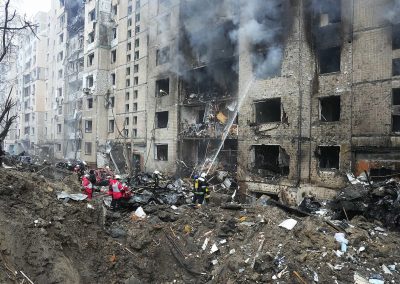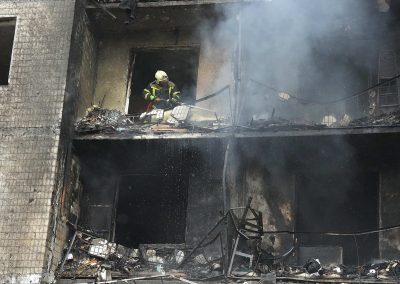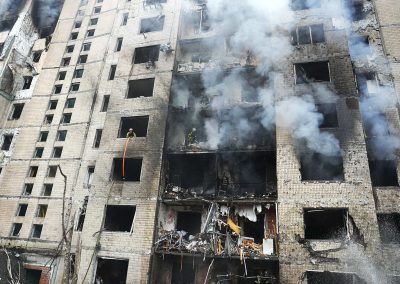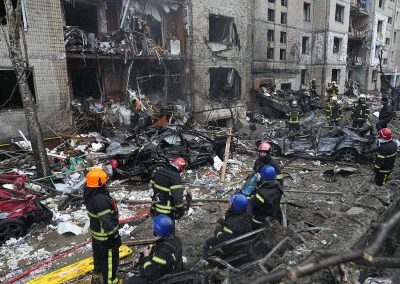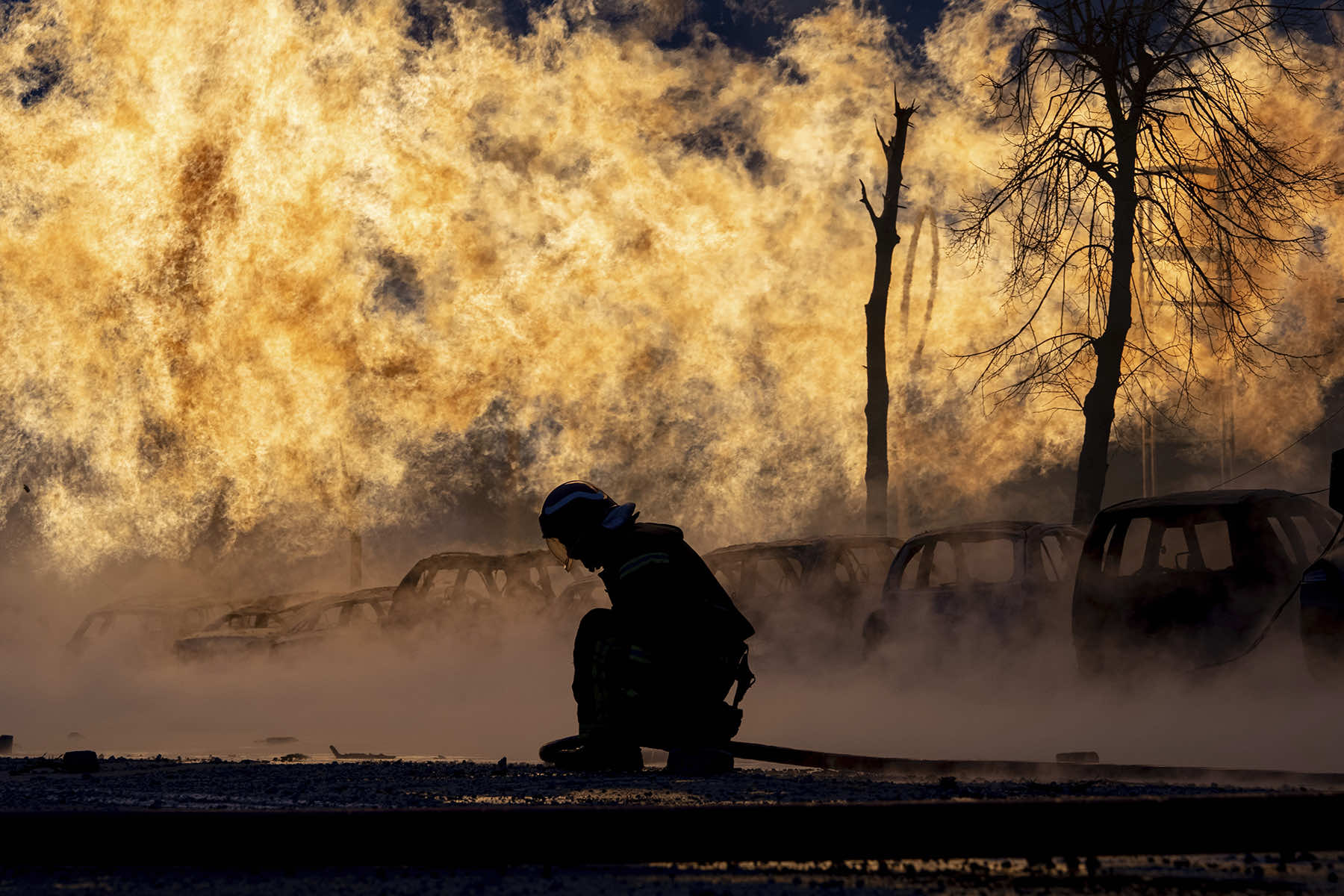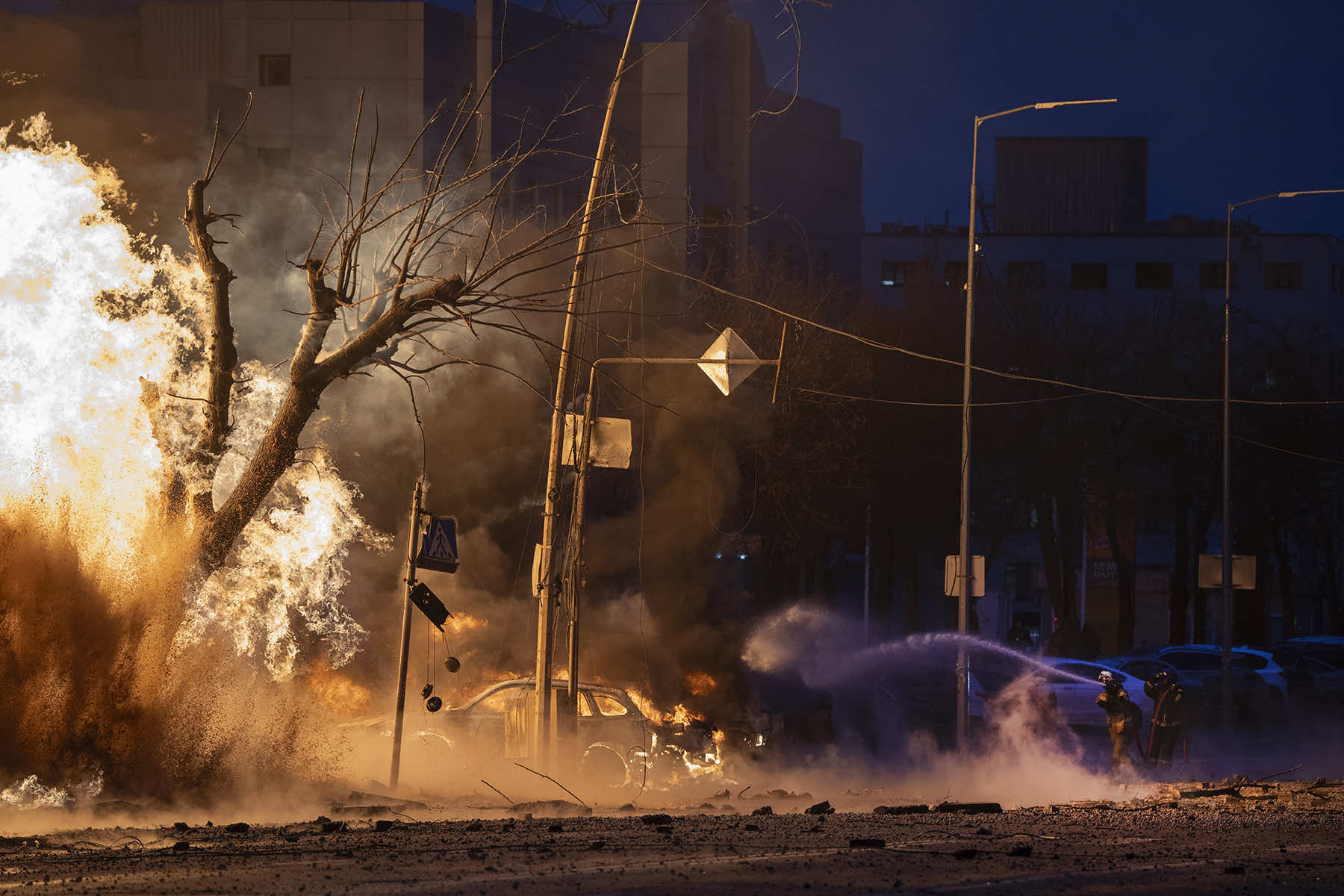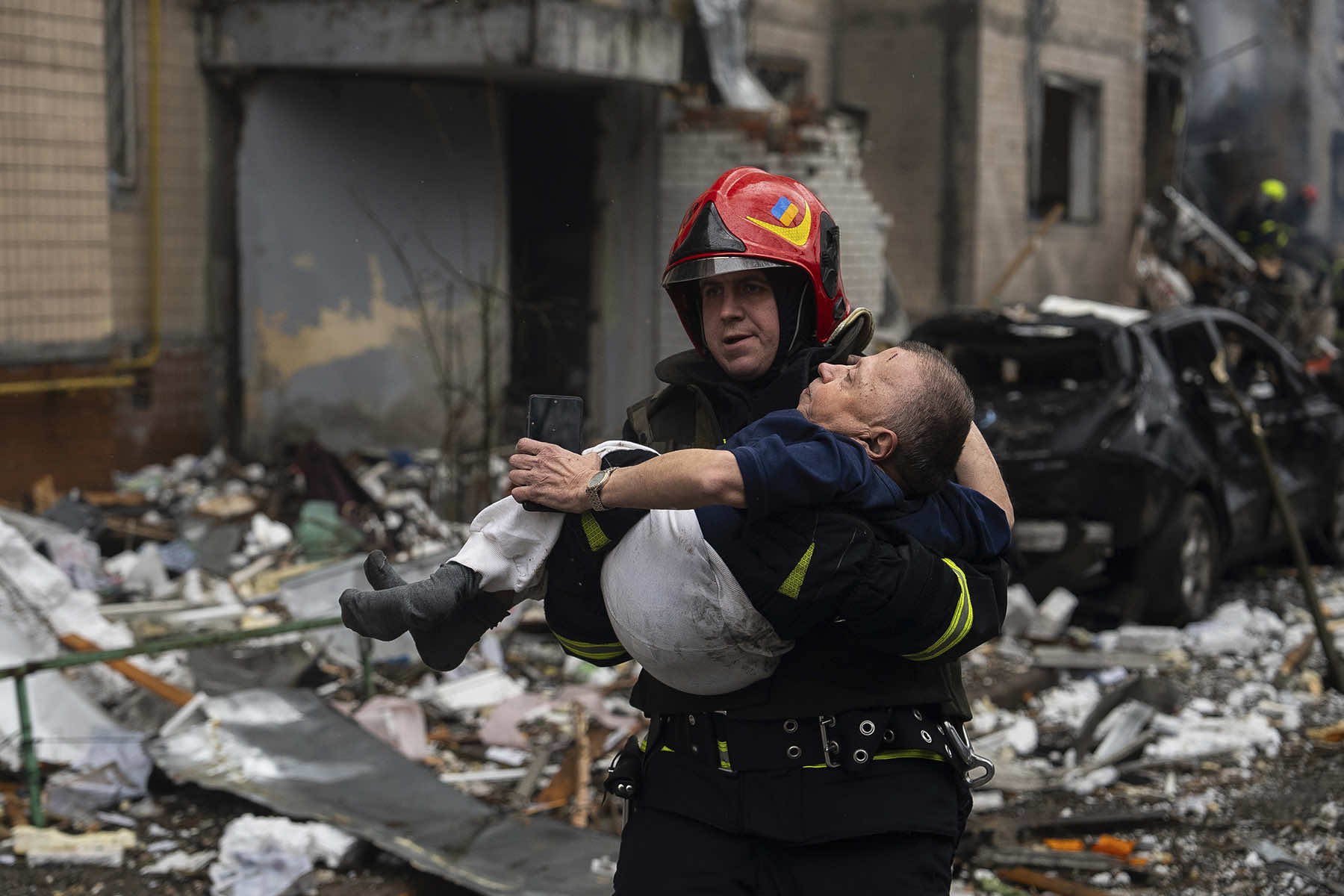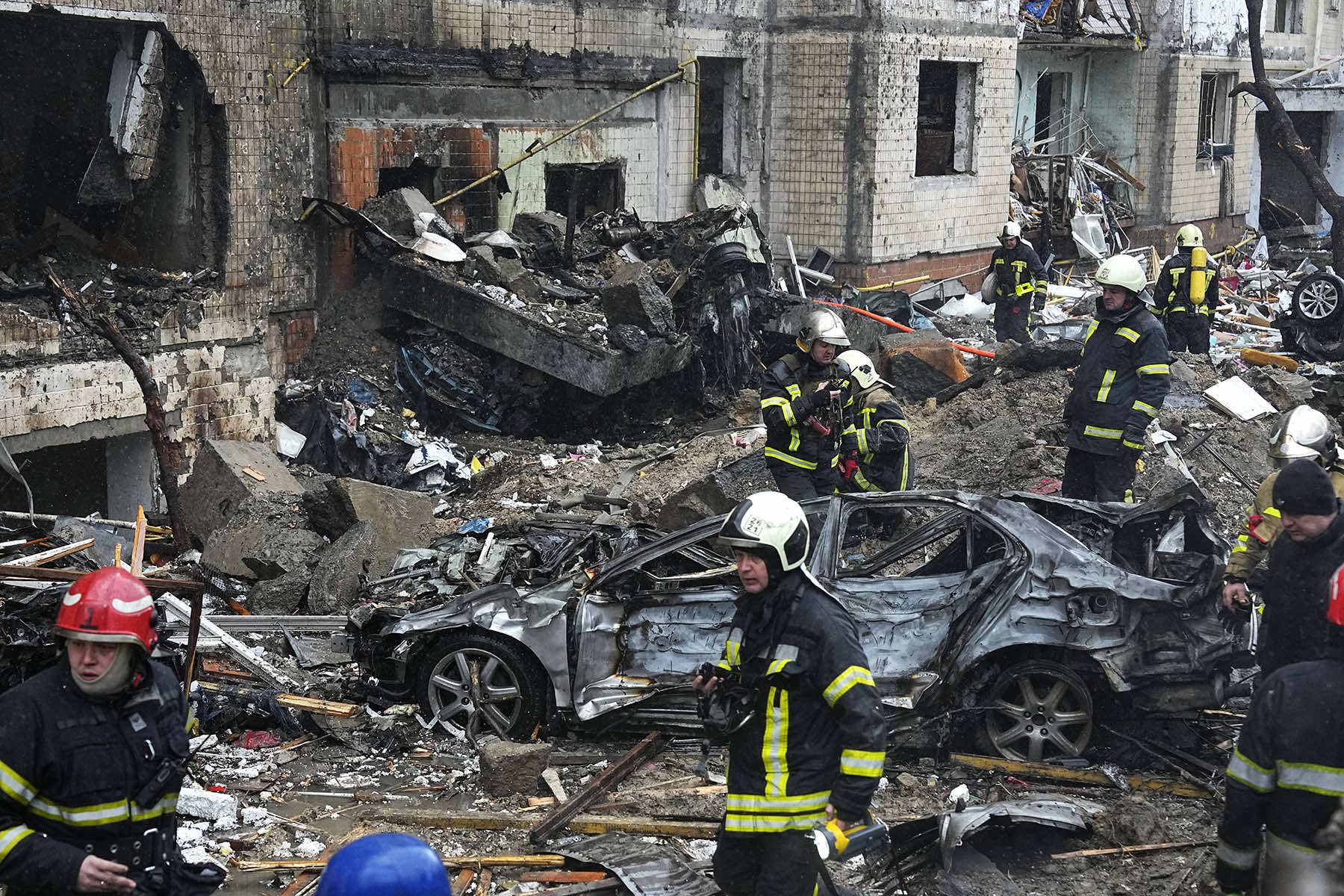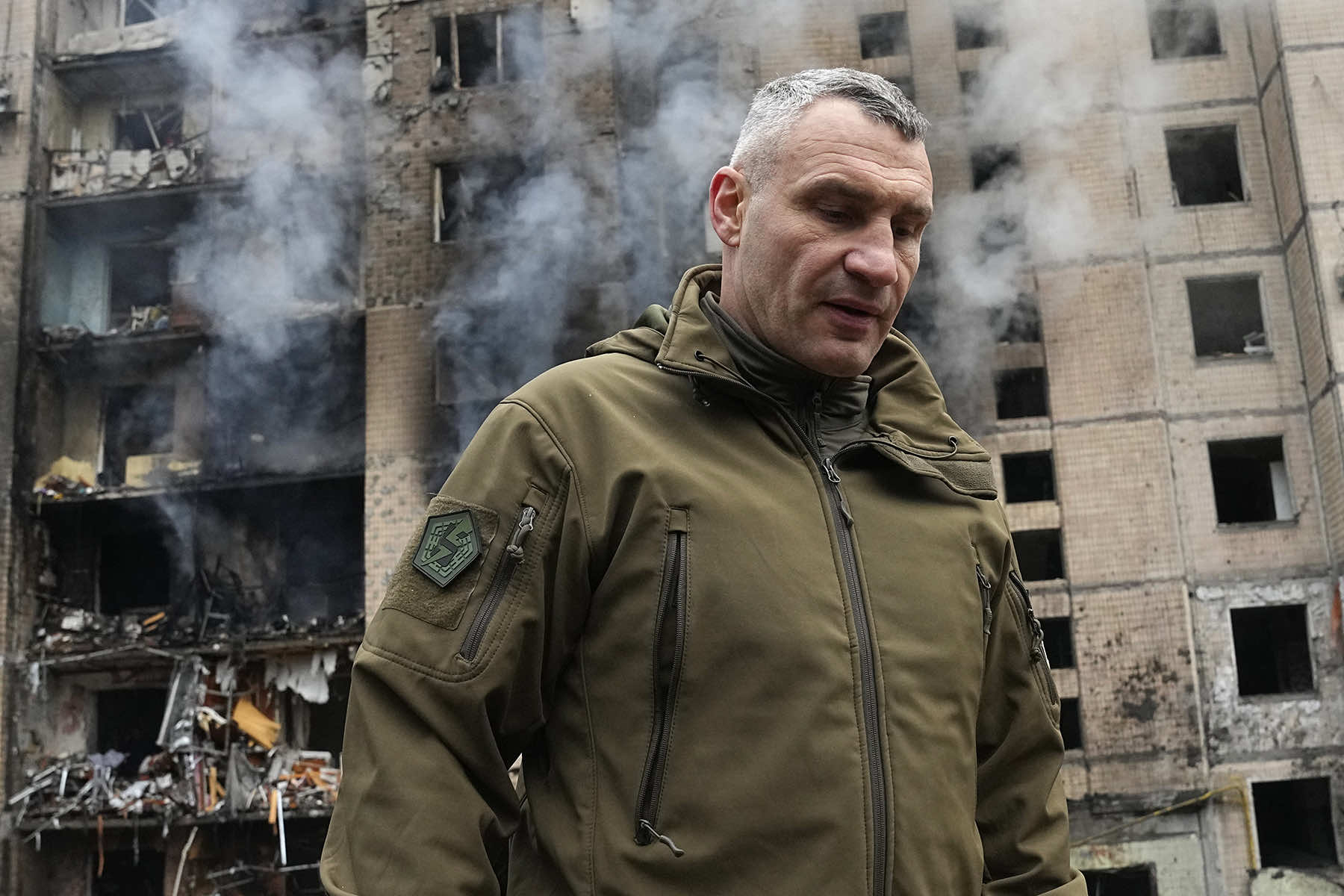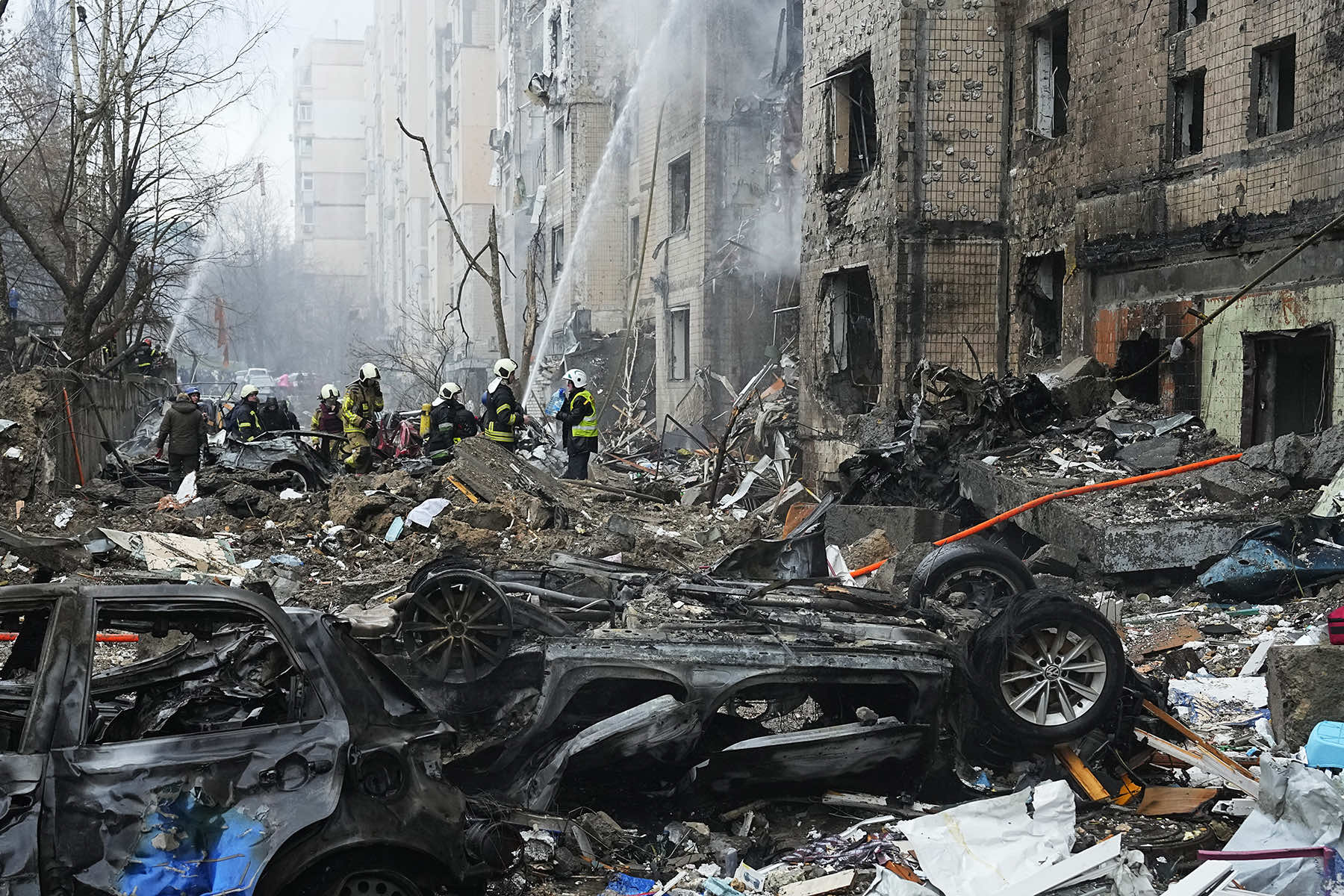
Ukraine’s two largest cities came under attack on January 2 from Russian missiles that killed five people and injured as many as 130, officials said, as the war approached its two-year mark and the Kremlin stepped up its winter bombardment of urban areas.
Air defenses shot down all 10 of the Russian Kinzhal missiles, which can fly at 10 times the speed of sound, out of about 100 of various types that were launched, said General Valerii Zaluzhnyi, Ukraine’s commander-in-chief.
But other missiles got through in Kyiv and in Kharkiv, the provincial capital of the northeastern region. In Kyiv and its surrounding region, four people were killed and about 70 were wounded, while in the Kharkiv region, one person was killed and about 60 were hurt, the Interior Ministry said.
The Kh-47M2 Kinzhal is an air-launched ballistic missile that is rarely used by Russian forces due to its cost and limited stocks. The barrage fired on January 2 was the highest number used in one attack since the start of the war, Ukraine’s Air Force spokesperson Yurii Ihnat said.
The latest round of attacks by Russia began on December 29 with its largest single assault on Ukraine of the war, as fighting along the 620-mile front line has subsided into grinding attrition amid winter. At least 41 civilians were killed.
Ekonomichna Pravda, which cited data from Forbes, reported that Russia spent an estimated $1.17 billion on the long-range missiles in the attack. The Institute for the Study of War (ISW) think tank in a December 29 assessment noted Forbes “previously reported that Russian Kh-101 cruise missiles cost an estimated $13 million per missile.”
“Current Russian missile and drone reserves and production rates likely do not allow Russian forces to conduct regular large-scale missile strikes, but likely do allow for more consistent drone strikes, which can explain the recent pattern of Russian strike packages,” the ISW said. “Russian forces notably appear to be using larger quantities of the more expensive Kh-101 cruise missiles to overwhelm Ukrainian air defenses and increase the chances of striking targets in Ukraine with smaller quantities of cheaper missile variants.”
A 15-year-old boy was killed and seven people wounded after falling debris from one of 87 downed drones hit a residential building in the southern Ukrainian city of Odesa, the head of the region’s military administration, Oleh Kiper, said. Debris also sparked a number of small fires, including at the city’s port.
In the western city of Lviv, Russian attacks severely damaged a museum dedicated to Roman Shukhevych, a controversial Ukrainian nationalist and military commander who fought for Ukrainian independence during World War II. University buildings in the town of Dubliany were also damaged. Nearby one person was killed, with three schools and a kindergarten damaged in a drone attack. Local emergency services said 30 people were injured.
Writing on social media, Lviv Mayor Andriy Sadovyi described the strike as “a war for our history” that was “symbolic and cynical.”
At a nine-story Kyiv apartment building where two people were killed, 48-year-old Inna Luhina was getting ready for work when a blast shattered her windows and she and other family members, including her 80-year-old mother, were struck by flying glass. More than 100 survivors gathered at a school set up as a temporary shelter.
Iryna Dzyhil, a 55-year-old resident of the same building, said the explosion threw her and her husband from their chairs, and a subsequent fire trapped them on the top floor until emergency crews rescued them via the roof.
“They say they’re hitting military targets, but they’re hitting people, killing our children and our loved ones,” Dzyhil said of the Russians.
Russia fired almost 100 missiles of various types in the attacks, President Volodymyr Zelenskyy said on X, formerly Twitter. He claimed at least 70 were shot down, almost all of them in the Kyiv area, noting that Western-supplied air defense systems such as Patriots and NASAMS had saved hundreds of lives.
In his nightly address, Zelenskyy said that since December 29, Russia has used almost 300 missiles and more than 200 Shahed drones against Ukraine.
The attacks created a desolate morning scene in Kyiv, with most cafes and restaurants remaining closed. Many people opted to stay indoors or seek refuge in shelters as powerful blasts shook the city from early morning. Air raid sirens blared for nearly four hours, and the city’s subway stations — which serve as shelters — were crowded.
After Ukraine’s Air Force issued warnings about incoming missiles, people wearing pajamas underneath their coats took sleeping bags, mats, and their pets to subway stations while loud explosions echoed above. At one of the central stations, called Golden Gates, hundreds of people filled the spacious underground areas while trains continued to run.
“Perhaps today was the most frightening because there were so many explosions,” said resident Myroslava Shcherba.
Putin has insisted that Moscow would only target military infrastructure in Ukraine, but officials in Kyiv have documented the brutal Russian dictator’s acts of terrorism against civilians, with casualties from daily attacks on apartment buildings, shopping centers, and residential areas.
In other developments, Russia’s Defense Ministry said one of its warplanes accidentally released munitions over the southwestern Russian village of Petropavlovka in the Voronezh region on January 2, damaging six houses but causing no injuries. It said an investigation will determine the cause of the accident but did not say what type of weapon the warplane dropped.
In April, munitions accidentally released by a Russian warplane caused a powerful blast in Belgorod, damaging several cars and slightly injuring two people.

